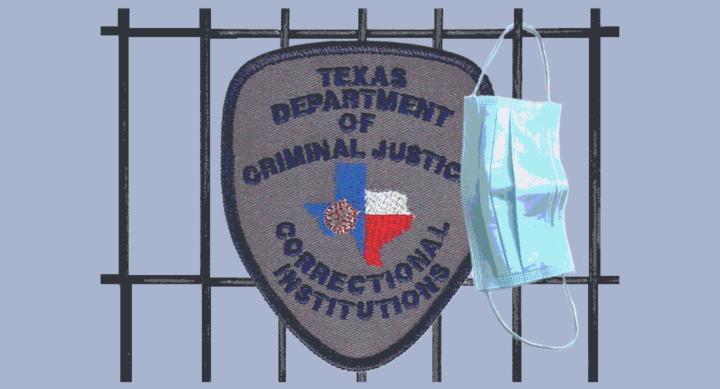Earlier this month, SEICHE Center for Health and Justice at Yale University co-hosted, “Understanding and Addressing the Occupational Health Hazards of Correctional Staff,” a webinar about pressing on-the-job issues experienced by correctional employees. The webinar comes just weeks after PJIL released a new report, “Canary in the Coal Mine: A Profile of Staff COVID Deaths in the Texas Prison System,” which revealed the devastating impact of COVID-19 on prison staff in Texas. As the lead author, I was seeped in data on COVID deaths and infections among Texas prison workers, and our analysis showed what correctional health experts had been warning since the pandemic began—the issues that challenged agencies’ ability to mitigate the spread of COVID in correctional facilities need to be understood through a public health framework. SEICHE’s webinar went a step further by identifying the challenges facing prison staff as occupational health hazards, and got me thinking about our findings and recommendations through an occupational health lens.
Correctional officers have a high risk of exposure to COVID during their shifts. As we discuss in our report, overcrowding, inadequate sanitation, and poor ventilation significantly increase the risk of COVID transmission behind bars. Because of these inherent risks, as well as the limited mitigation measures that have been taken by the agency, there have been an extremely high number of staff deaths and infections in Texas prisons. The Texas prison agency has lost 78 staff, more than any other state, and had over 20,000 employee infections between the onset of the pandemic and the end of January 2022.
During the peak Delta variant outbreak last September, TDCJ lost 13 employees in just one month, a staggering number of COVID deaths.
Despite the high risk of exposure to COVID, the Texas Department of Criminal Justice (TDCJ) has displayed a disturbing lack of regard for people who live and work in Texas prisons. In July 2021, TDCJ announced that it would return to “normal operations'' at facilities that have achieved 70% vaccination rates among staff and incarcerated people, a seemingly arbitrary cut-off. And the agency failed to reinstate mitigation measures (e.g. face mask mandates, mass testing, etc.), even as the Delta and Omicron variants swept through prisons across the state and evidence emerged that vaccines alone would be insufficient to limit the spread of contagious variants, especially in congregate settings like prisons. During the peak Delta variant outbreak last September, TDCJ lost 13 employees in just one month, a staggering number of COVID deaths.
The lack of COVID mitigation measures, even as the virus surged in communities across the state, has also exacerbated another critical occupational hazard—the large number of staff vacancies at Texas prisons. As our report discusses, Texas prisons are understaffed by 7,000 correctional officers, meaning that 29% of correctional officer positions are vacant. And during the height of the Omicron surge, more than 13.5% of prison employees had active COVID infections. In a 2018 article in the Texas Tribune, staff at the Telford Unit, where only 65% of correctional officer positions were filled at the time (now there are fewer than 35% of positions filled), reported grueling and unsafe working conditions and mandatory overtime as a result.
Severe understaffing is not only a hazard for staff. It also leads to even more inhumane conditions for incarcerated people.
Severe understaffing is not only a hazard for staff. It also leads to even more inhumane conditions for incarcerated people. As we discussed in our report, when understaffed, prisons tend to cut back on recreation, phone calls, visits, and food services. People incarcerated at Telford, for example, reported they were “malnourished from being fed small, sometimes rotting sack meals in their cells and rarely got to go outside.” The panelists on SEICHE’s webinar also drove this point home—poor conditions that make prisons so unbearable for people who are incarcerated create dangerous working conditions for correctional staff and vice versa.
This part of the discussion reminded me why we gave our report its namesake—we believe the high rate of death and infection among staff provide a window into the impact that COVID is having in Texas prisons and serve as a proverbial “canary in the coal mine,” warning that the pandemic is still far from over for people who live and work in prisons.
Of course, the fact that we had to draw inferences about the impact of COVID on people who are incarcerated suggests another occupational health hazard for staff—a lack of transparency about the full picture of a deadly virus in correctional facilities. For a while, TDCJ provided data about COVID deaths and infections among both prison staff and people who are incarcerated. But in 2021, the agency stopped releasing timely updates on COVID’s impact on incarcerated people. Given that this highly transmissible and deadly virus makes no distinction between staff and incarcerated people, how are correctional staff able to accurately assess their risk of contracting it if they don’t know how many people at their workplace are potential vectors?
I realize that our report came at a time when most people are tired of navigating COVID restrictions, and states and cities around the country are rolling back mask mandates, social distancing requirements, and vaccine mandates. After two years of the pandemic, most people are eager to “return to normal.” However, our findings revealed that COVID is still a serious hazard for people working in prisons, and the rollback of virus mitigation measures makes COVID an ongoing threat to the health and safety of incarcerated people. Agencies and legislators would be wise to begin analyzing the issues facing prison staff as occupational health hazards, and develop meaningful reforms that create healthier correctional environments for both staff and people who are incarcerated.
"Degree of Civilization” is the blog of the Prison and Jail Innovation Lab, its title adapted from Dostoyevsky’s famous quote, "The degree of civilization in a society can be judged by entering its prisons.” Our blog posts will explore and analyze the dehumanizing and dangerous conditions in our nation’s prisons and jails and the critical need for effective independent oversight and meaningful data about what’s happening behind the walls. We’ll be commenting on recent news and developments; analyzing data that highlights trends that affect the safety and health of the people who live and work in correctional facilities; and reflecting on the lived experiences of people who are incarcerated. The entire PJIL team will be contributing to the blog, so you are sure to hear different voices and approaches to these issues.
Author
-

Alexi Jones
Alexi graduated from the LBJ School of Public Affairs in May 2023. She received her B.A. from Wesleyan University in 2017, where she volunteered as a tutor with the Wesleyan Center for Prison Education. Prior to graduate school, Alexi worked as a policy analyst at the Prison Policy Initiative. While at the Prison Policy Initiative she authored national reports about the overuse of jails in the United States, the importance of not excluding people convicted of violent offenses from criminal justice reforms, the rates of correctional control in each state, and the high price of phone calls from jails. At PJIL, Alexi worked to analyze COVID-related deaths in correctional settings and conducted research for other large-scale projects.
Key Words
covid
prison deaths
prison staff


